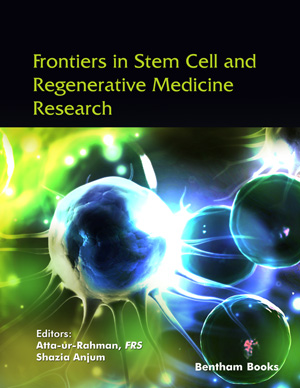Abstract
Brucella is an intracellular bacterial pathogen capable of long-term persistence in the host, resulting in chronic infections in livestock and wildlife. The type IV secretion system (T4SS) is an important virulence factor of Brucella and is composed of 12 protein complexes encoded by the VirB operon. T4SS exerts its function through its secreted 15 effector proteins. The effector proteins act on important signaling pathways in host cells, inducing host immune responses and promoting the survival and replication of Brucella in host cells to promote persistent infection. In this article, we describe the intracellular circulation of Brucella-infected cells and survey the role of Brucella VirB T4SS in regulating inflammatory responses and suppressing host immune responses during infection. In addition, the important mechanisms of these 15 effector proteins in resisting the host immune response during Brucella infection are elucidated. For example, VceC and VceA assist in achieving sustained survival of Brucella in host cells by affecting autophagy and apoptosis. BtpB, together with BtpA, controls the activation of dendritic cells during infection, induces inflammatory responses, and controls host immunity. This article reviews the effector proteins secreted by Brucella T4SS and their involvement in immune responses, which can provide a reliable theoretical basis for the subsequent mechanism of hijacking the host cell signaling pathway by bacteria and contribute to the development of better vaccines to effectively treat Brucella bacterial infection.
Graphical Abstract
[http://dx.doi.org/10.1016/S1473-3099(06)70382-6] [PMID: 16439329]
[http://dx.doi.org/10.3201/eid1312.070527] [PMID: 18258041]
[http://dx.doi.org/10.1111/j.1574-6976.2012.00334.x] [PMID: 22373010]
[http://dx.doi.org/10.1128/IAI.71.3.1481-1490.2003] [PMID: 12595466]
[http://dx.doi.org/10.3855/jidc.6625] [PMID: 26230118]
[http://dx.doi.org/10.1016/j.ijantimicag.2010.06.013] [PMID: 20696557]
[http://dx.doi.org/10.1016/j.vetmic.2007.11.023] [PMID: 18226477]
[http://dx.doi.org/10.1111/j.1574-6968.2009.01530.x] [PMID: 19493005]
[http://dx.doi.org/10.1111/j.1462-5822.2005.00502.x] [PMID: 15839898]
[http://dx.doi.org/10.2217/fmb.10.52] [PMID: 20521932]
[PMID: 5693645]
[http://dx.doi.org/10.1017/S0022172400044612] [PMID: 13367402]
[PMID: 13470254]
[http://dx.doi.org/10.1038/srep44420] [PMID: 28300153]
[http://dx.doi.org/10.21307/pjm-2018-029] [PMID: 30015453]
[http://dx.doi.org/10.1016/j.mimet.2006.12.015] [PMID: 17261338]
[http://dx.doi.org/10.1016/j.ajpath.2015.03.003] [PMID: 25892682]
[http://dx.doi.org/10.1017/S146625230700117X] [PMID: 17389050]
[http://dx.doi.org/10.1128/IAI.66.12.5711-5724.1998] [PMID: 9826346]
[http://dx.doi.org/10.1016/j.tim.2015.09.007] [PMID: 26497941]
[http://dx.doi.org/10.1111/j.1600-0854.2008.00718.x] [PMID: 18266913]
[http://dx.doi.org/10.1084/jem.20030088] [PMID: 12925673]
[http://dx.doi.org/10.1073/pnas.032514299] [PMID: 11830669]
[http://dx.doi.org/10.1016/j.chom.2011.12.002] [PMID: 22264511]
[http://dx.doi.org/10.1128/IAI.68.7.4102-4107.2000] [PMID: 10858227]
[http://dx.doi.org/10.3389/fcimb.2015.00072] [PMID: 26528442]
[http://dx.doi.org/10.1016/j.micpath.2017.03.007] [PMID: 28284850]
[http://dx.doi.org/10.3389/fimmu.2019.01759] [PMID: 31481953]
[http://dx.doi.org/10.1007/s00281-016-0581-1] [PMID: 27405866]
[http://dx.doi.org/10.1128/IAI.72.4.2429-2433.2004] [PMID: 15039375]
[http://dx.doi.org/10.1128/MMBR.00023-09] [PMID: 19946141]
[http://dx.doi.org/10.3390/ijms222413637] [PMID: 34948430]
[http://dx.doi.org/10.1016/j.mib.2012.11.005] [PMID: 23318140]
[http://dx.doi.org/10.1371/journal.ppat.1000487] [PMID: 19557163]
[http://dx.doi.org/10.1111/j.1365-2958.2008.06487.x] [PMID: 19019140]
[http://dx.doi.org/10.1111/j.1462-5822.2011.01601.x] [PMID: 21501366]
[http://dx.doi.org/10.1111/j.1462-5822.2011.01618.x] [PMID: 21707904]
[http://dx.doi.org/10.1371/journal.ppat.1003556] [PMID: 23950720]
[http://dx.doi.org/10.1111/cmi.12224] [PMID: 24119283]
[http://dx.doi.org/10.3389/fcimb.2013.00028] [PMID: 23847770]
[http://dx.doi.org/10.1007/s00284-019-01651-6] [PMID: 30805699]
[http://dx.doi.org/10.1007/BF01923455] [PMID: 7988659]
[http://dx.doi.org/10.1038/nri2359] [PMID: 18670423]
[http://dx.doi.org/10.1111/j.1462-5822.2007.00922.x] [PMID: 17441987]
[http://dx.doi.org/10.1002/j.1460-2075.1995.tb07256.x] [PMID: 7781611]
[http://dx.doi.org/10.1128/jvi.69.3.1480-1484.1995] [PMID: 7853480]
[http://dx.doi.org/10.1128/mBio.00418-12] [PMID: 23422410]
[http://dx.doi.org/10.1371/journal.ppat.1004747] [PMID: 25742138]
[http://dx.doi.org/10.1038/nature17631] [PMID: 27007849]
[http://dx.doi.org/10.3390/ijms20174104] [PMID: 31443507]
[http://dx.doi.org/10.1128/mBio.01538-19] [PMID: 31337727]
[http://dx.doi.org/10.1021/bi401373r] [PMID: 24251537]
[http://dx.doi.org/10.1186/1471-2091-13-16] [PMID: 22892012]
[http://dx.doi.org/10.1128/mBio.03350-19] [PMID: 32234817]
[http://dx.doi.org/10.1042/BST20120156] [PMID: 23176479]
[http://dx.doi.org/10.1371/journal.ppat.1007979] [PMID: 32298382]
[http://dx.doi.org/10.1093/intimm/dxh186] [PMID: 15585605]
[http://dx.doi.org/10.1371/journal.ppat.1003785] [PMID: 24339776]
[http://dx.doi.org/10.1016/j.febslet.2013.09.007] [PMID: 24076024]
[http://dx.doi.org/10.1038/nm1734] [PMID: 18327267]
[http://dx.doi.org/10.1074/jbc.M805458200] [PMID: 19196716]
[http://dx.doi.org/10.1371/journal.ppat.0040021] [PMID: 18266466]
[http://dx.doi.org/10.4049/jimmunol.0902008] [PMID: 20018612]
[http://dx.doi.org/10.1016/j.bbrc.2016.06.064] [PMID: 27311859]
[http://dx.doi.org/10.1074/jbc.M117.815878] [PMID: 29061850]
[http://dx.doi.org/10.1016/j.bbrc.2011.11.104] [PMID: 22155231]
[http://dx.doi.org/10.1016/j.chom.2017.07.017] [PMID: 28844886]
[http://dx.doi.org/10.1016/j.ijbiomac.2020.08.134] [PMID: 32827613]
[http://dx.doi.org/10.3389/fcimb.2020.603457] [PMID: 33489935]
[http://dx.doi.org/10.15252/embj.2021107664] [PMID: 34423453]
[http://dx.doi.org/10.3389/fcimb.2016.00153] [PMID: 27900285]
[http://dx.doi.org/10.1128/IAI.01227-15] [PMID: 26667834]
[http://dx.doi.org/10.1128/IAI.00522-17] [PMID: 28993461]
[http://dx.doi.org/10.3389/fcimb.2019.00423] [PMID: 31956605]
[http://dx.doi.org/10.1186/s12964-014-0053-y] [PMID: 25304327]










